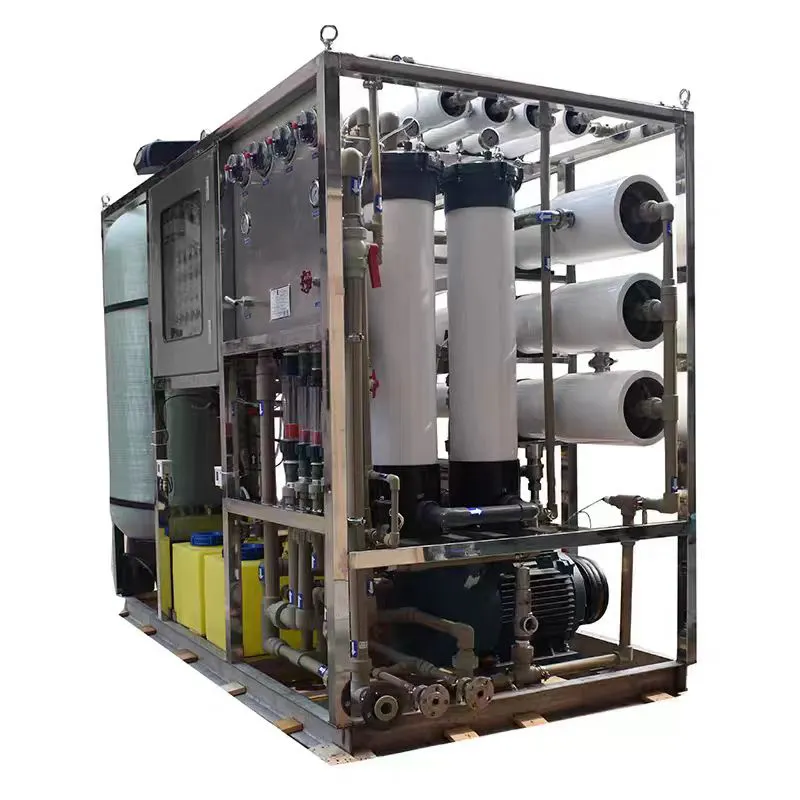Опреснение помогает обеспечивать пресной водой районы, которые испытывают трудности с получением достаточного количества безопасной и чистой природной воды. Поскольку потребность в пресной воде растет, было изобретено множество методов превращения морской воды в чистую воду для человеческого использования. Это объясняет основные типы опреснения морской воды, их преимущества и ситуации их применения.
Обратный осмос (RO)
Системы десalinизации, использующие Обратный Осмос, широко применяются в странах по всему миру. Они используют полупроницаемую мембрану для разделения примесей из морской воды от чистой воды. Когда давление применяется к одной стороне мембраны, оно заставляет чистую воду проходить через нее, в то время как соли и другие примеси остаются на другой стороне.
Люди выбирают ООС (Обратный Осмос) из-за его высокой эффективности и способности фильтровать до 99 процентов солей и примесей. Он используется в широком спектре проектов независимо от их размера. Тем не менее, этот метод не очень энергоэффективен, и мембраны часто нуждаются в обслуживании или замене из-за загрязнения или образования накипи. Тем не менее, улучшения в мембранах и устройствах захвата энергии снижают затраты и делают очистку воды более эффективной.
Многоступенчатая флеш-дестилляция (MSF)
Это означает, что процесс последовательно нагревает и испаряет морскую воду на нескольких уровнях давления. В этом случае морская вода нагревается и превращается в пар в нескольких разных секциях. Уменьшение давления на каждом этапе приводит к тому, что оставшаяся жидкость превращается в пар, а затем снова конденсируется в пресную воду.
Места, где много отходящего тепла, например, вокруг электростанций, — это те районы, где МПО (многократная перегонка с использованием пара) очень эффективна. Она известна своей надежностью в обеспечении воды и удовлетворении потребностей многих людей. Поскольку станции МПО сложны и используют энергию, главным образом, из ископаемых источников или тепло технологических процессов заводов, они обычно менее устойчивы, чем другие типы установок.
Многоступенчатая дистилляция (МСД)
Многоступенчатая дистилляция (МСД) — это другой метод десалинации, и, в отличие от МПО, он чаще всего более эффективен в использовании энергии. МСД разделяет процесс испарения воды на несколько «эффектов» или стадий, при всё более низком давлении и температуре.
Морская вода кипятится для каждого этапа, и созданный пар направляется для нагрева следующего. По сравнению с МПО, этот процесс помогает использовать меньше энергии и снижает операционные расходы. МЭО обычно комбинируется с другими технологиями для повышения эффективности работы компании. Она применяется больше всего в местах с высокой промышленной активностью, так как может работать с уже существующими нагревателями. Также, подобно МПО, МЭО требует инвестиций в дорогое оборудование и создание необходимой инфраструктуры.
Электродиализ (ЭД)
ЭД означает электродиализ и представляет собой метод, при котором используется электрическая сила для отделения солей из воды через селективные мембраны. ЭД использует другой метод по сравнению с другими технологиями, позволяя десalinization происходить при обычной температуре и уменьшая потребление энергии.
Использование ЭД наиболее эффективно при десalinизации слабосоленой солоноватой воды. Оно применяется в сельском хозяйстве, промышленности и небольших местностях, обеспечивая отличное удаление ионов. Однако, когда вода очень соленая, как морская, она становится менее эффективной и, следовательно, редко применяется в морской воде без изменений.
Солнечная технология десалинации
С помощью технологии солнечной десalinизации солнечная энергия используется для очистки океанской воды, предоставляя экологически безопасный и устойчивый способ обеспечения водой. Солнечную энергию можно разделить на солнечные дистилляторы и системы концентрированной солнечной энергии (CSP).
Как и Солнце на Земле, солнечные изображения используют солнечную энергию для преобразования морской воды в пресную. Поскольку они просты и недороги, их основным недостатком является то, что они не производят много. Используются зеркала или линзы для фокусировки солнечного света на приемнике в системе CSP, таким образом нагревая воду для паломничества с использованием МSF или Мед.
Солнечная десalinization обнаружена превосходным вариантом в местах, где много солнечных дней и подача электроэнергии не проста. Технология производит результаты экологичности, а также может сочетаться с проектами возобновляемой энергии. Тем не менее, представление этих систем может быть сложным из-за расходов и необходимого местоположения.
В целом, каждая десалинация имеет своих собственных профессионалов и противников процесса, и выбранная технология обычно отражает энергоресурсы места, природу воды и ставки использования. Поскольку мир нуждается в более устойчивой воде и должен развиваться, создавать и улучшать технологии, важно улучшить водные проблемы во всем мире.

